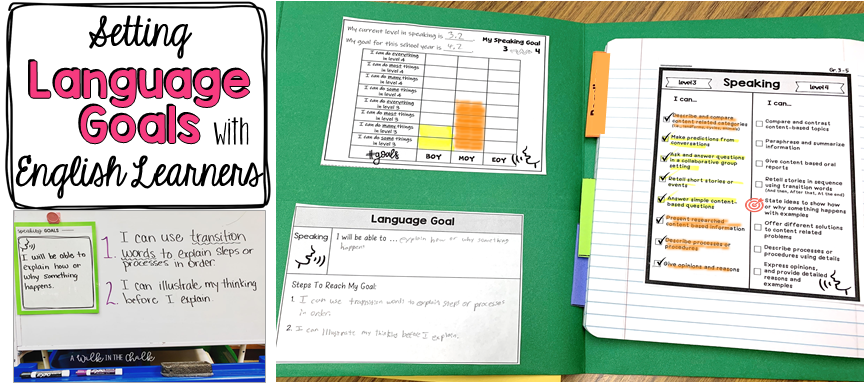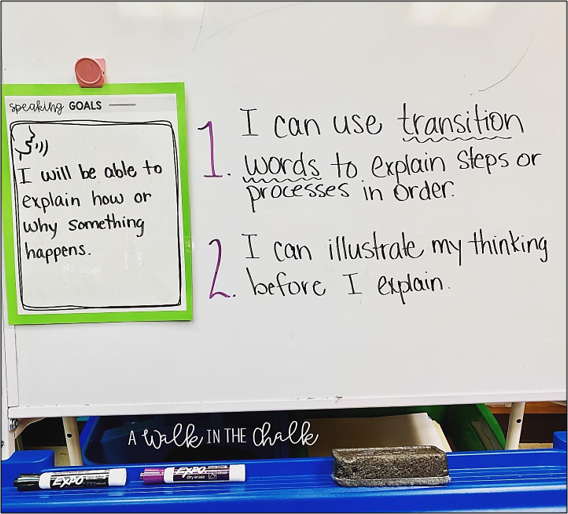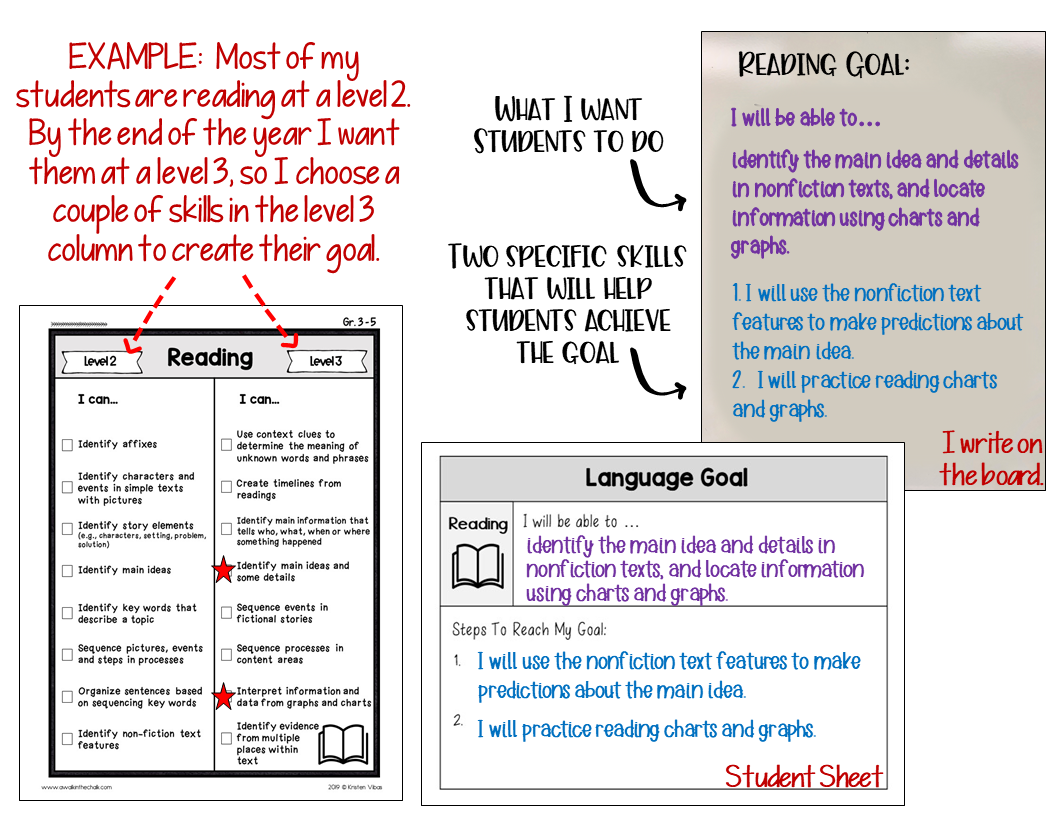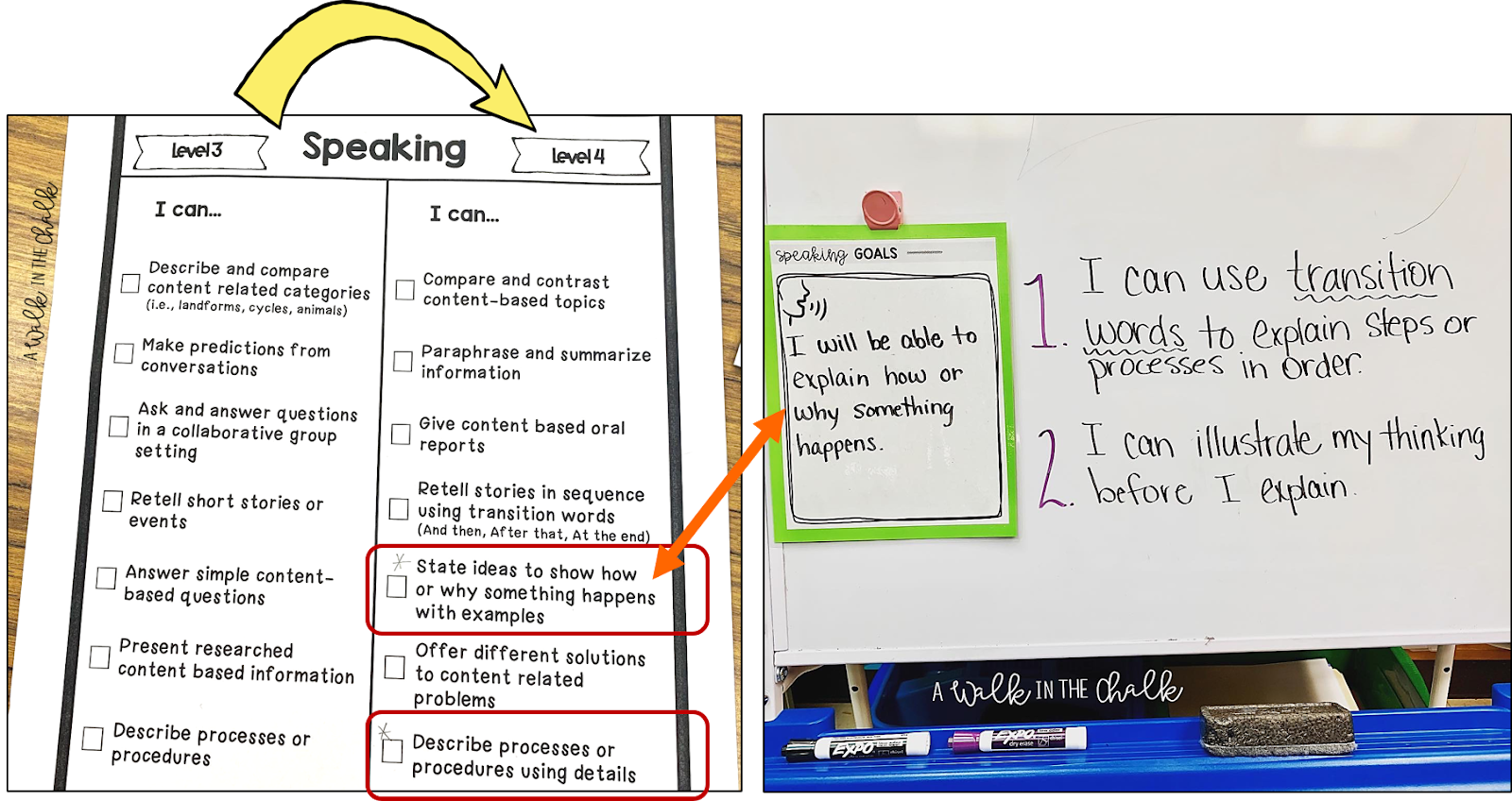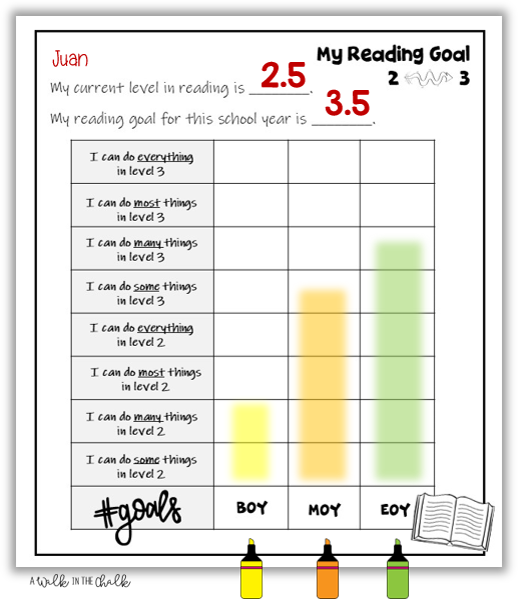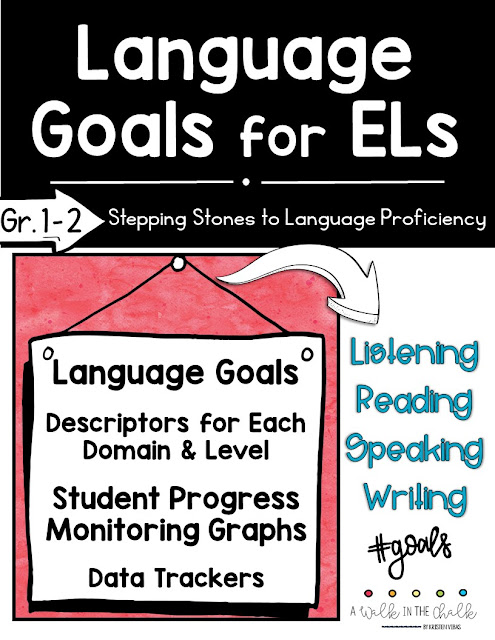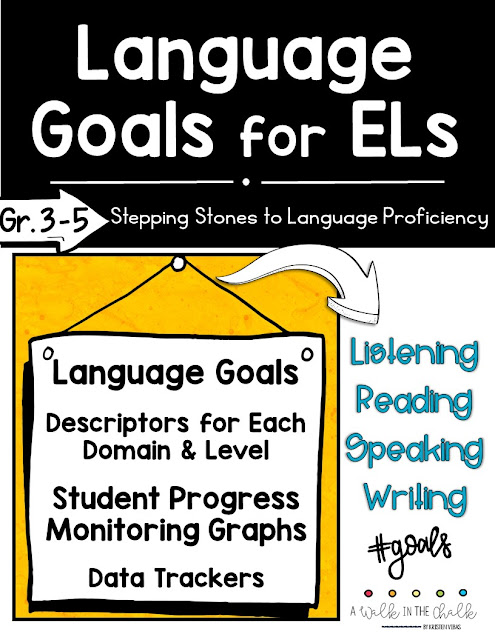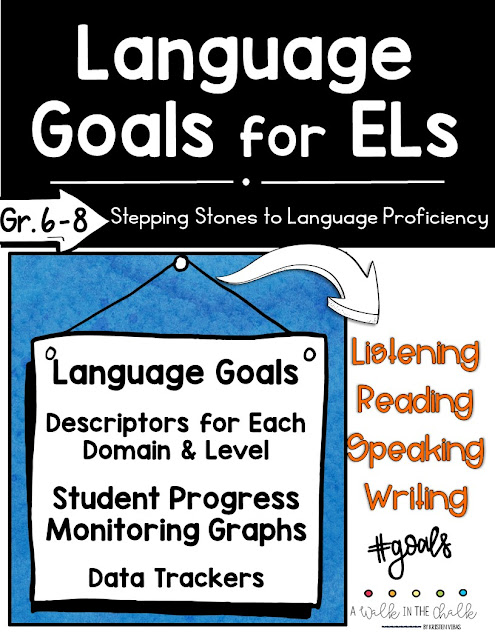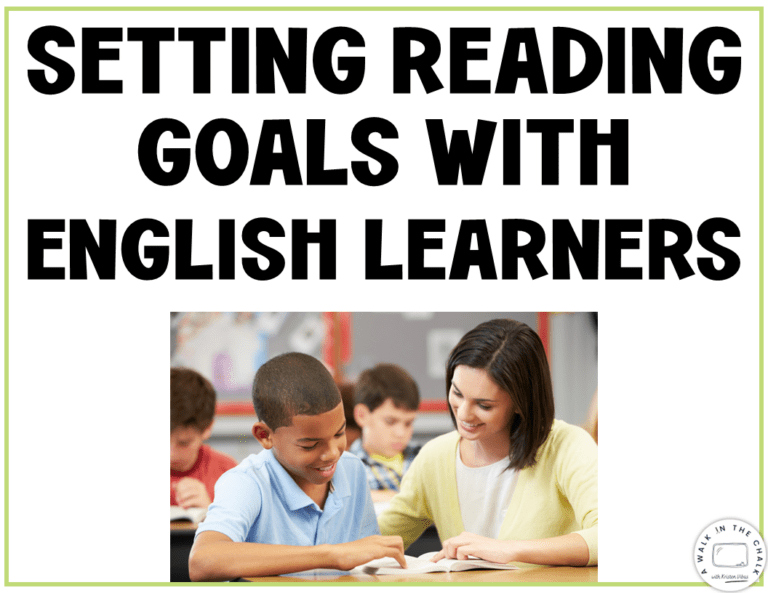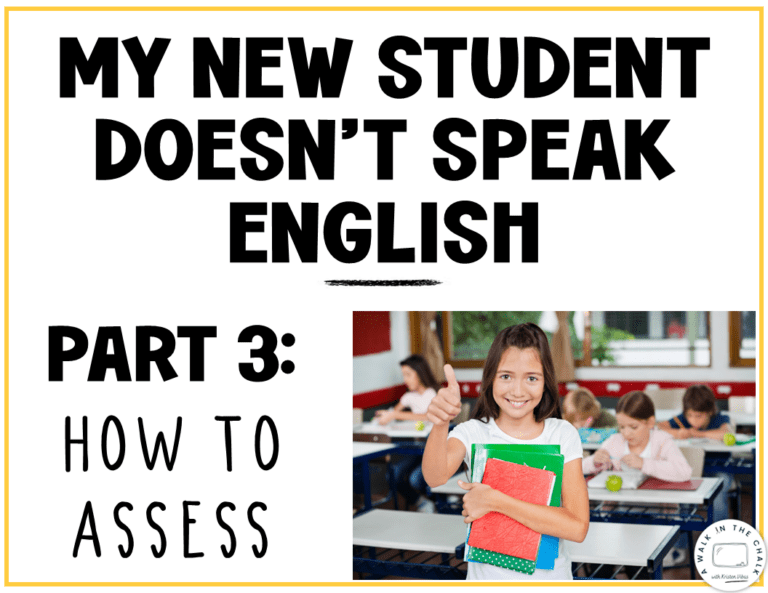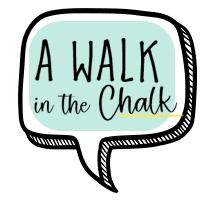prompt, reading assessment, oral interview and listening skills activities.
Once you have a good idea of where your students are currently, and what they
CAN DO, the next step is to determine where they need to be by a given time. My timeline is generally the end of the school year, and I typically set goals to improve one whole level up in a given domain. For example, if a student is a level 2 in writing, and this is a weak language domain for him/her, I am going to set a writing goal to get him/her to a level 3.
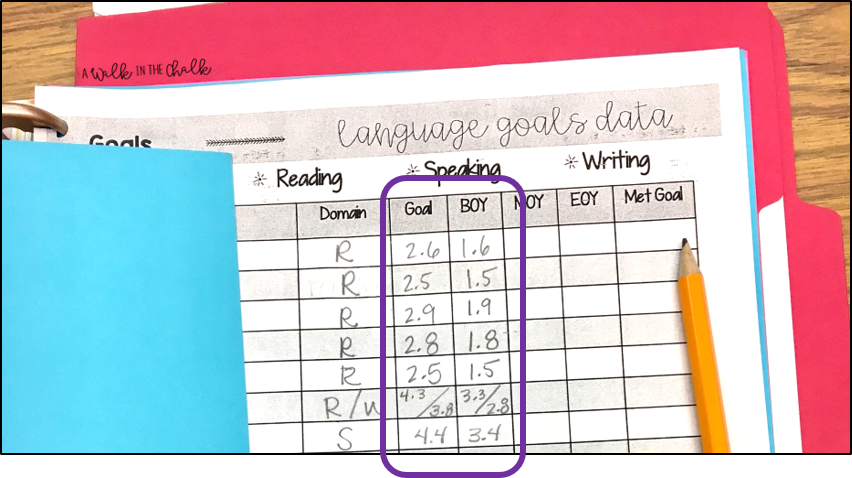 |
| Student names covered for privacy. |
Generally, I set one or two main goals with my students. If a student is
progressing at an appropriate rate in reading and listening, but is weaker in
writing and speaking, my focus with that student will be to create a writing
and speaking goal for the year. Of course we will still work on reading
and listening skills, but the goal is to measurably increase the weaker skills. If they are progressing in all areas but one, then they’ll have just one language goal for the year.
If I set two goals for a student, then I usually split the goals up focusing on one goal during the first half of the year, and the other during the second half.
I still track individual student progress, but the group as a whole is working towards a common goal. Ultimately, when setting goals, you’ll do what works best for you and your students. How it looks from one group to the next might look very different.
Creating Language Goals
After I analyze each student’s scores and I know the area(s) that need targeting, I use language descriptors to help create their goals. The descriptors are formatted with two levels side by side. Once I determine where my students or groups are, I then choose skills from the next level up to create a challenging, yet attainable, goal.
I’ll write the goal on the board for the students to copy on their own goal setting sheet. This sheet gets glued into their notebooks or their folders. We then, together, come up with skills we can work on that will help them reach that goal. I lead this discussion but they are definitely part of this process. Once a couple of strategies/skills are decided upon, I’ll write them on the board and the students copy them on their goal setting sheet as well. This will be a reference throughout the year as we keep focus on what their goals are.
I keep the language descriptors page, one for each student, in my binder. As we work, I check off the various skills and take anecdotal notes on how they are doing.
Here, I want to get my student(s) from a level 3 in Speaking to a level 4, so I use the descriptors to help create a challenging yet attainable goal.
Measuring Progress
For the students, or groups, that I have tracking their own progress, it is during this time that students shade in their graphs. Charting their own progress provides a
great visual and is highly motivating for most students. This too will look different depending on your students. You may find that this is also a good time to revisit the steps needed to reach their language goal(s).
I do not have my first graders chart their progress, nor do I have my newcomers. I usually add charting progress with my second or third graders and higher grades. My 1st graders know that we are working on goals because I post a learning target poster for each group, but they don’t track them, I do the tracking. I’m not suggesting that you don’t let your “firsties” track their own progress, I just choose not to. I have spoken with teachers who do and they have great success with it. You have to decide what works best for you and your students when setting goals. For newcomers, I show them at the end of the year how much progress they’ve made. They are usually amazed to see how far they’ve come.
In the End…
My number one piece of advice when setting language goals is, keep it simple! It can easily become overwhelming, but if you know your students’ needs, and you group them accordingly, you can set one goal for the group. If they have multiple needs, give them one goal at a time to work on. You can always give a second goal later.
When goals are clear and an action plan, or “road map”, is in place, students (and teachers) are set up for success!
(BOY) to the end of the year (EOY). For the students who track and chart their own progress, this process can be highly motivating. They love pushing themselves, IF they know what they are working towards.
- Data Collection Sheets – get to know your students and their needs
- Descriptors for Each Language Domain – levels formatted side by side
- Goal Setting Sheets – for students
- Goal Planning Sheets – for planning or language goal posters
- Progress Monitoring Graphs -students actively participate in tracking their progress
- Cover Pages and Divider Pages – for creating a personalized “Language Goals” teacher binder
It’s never too late to set goals with students.
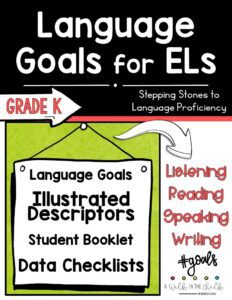
Click HERE to find all Language Goals for English Learners! Including money saving bundles.

